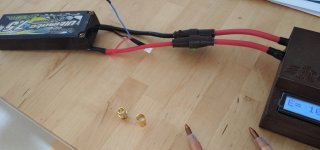ossivirt said:
Its meant to charge kCap module. Welder needs 800-2000Amps to work properly and I dont know any powersupply that can do that other that supercaps and lipo/sla batteries. Atleast at reasonable price..
Thanks, I kind of suspected that was the case but wasn't 100% positive. I did actually end up reading more on it a handful of pages after I posted the question.
Now I just will need to figure out what to power it with.
Related to what to power it with, I read a post or two about the headway LiFePo4 38120 cells, and the feeling was they were 'junk'. Why is that? Those cells are 'rated' at 200A each, but from what I've gathered, it seems they're quite capable of delivering 300A+ in a dead short, so based on that and the voltage specs for the kWeld, it seems like a 2s4p or 2s5p (should be around 1200A or 1500A, respectively) arrangement of them should work well. And then there is the safety factor - those LiFePo4 cells are a TON safer than LiPO cells. You can abuse them and over charge the heck out of them (NOT saying you should, of course) and while going too far over you'll destroy them, but unlike other chemistries, while it might get unpleasant, they more than likely won't burst into flames and burn your house down (I've seen video where testing a LiFePo4 cell, not a headway, and MASSIVELY overcharging it for 10+ hours resulted in it just bulging and outgassing, while a (re-purposed Tesla) pack made up of 18650's, which are arguably 'slightly' more stable than LiPO, had a cell burst into flames due to an accidental out of balance over charge condition which resulted in a runaway that caused most of the pack to go up). You have to get really stupid with LiFePo4's to even get to the point of rupturing them, causing them to vent gasses. I'd really rather go with a LiFePo4 headway arrangement over a LiPO pack if I can get the cells at a reasonable price, due to the safety margin, unless, of course, for some reason, the really won't work.
It seems like, in no particular order, the overall safest options are lead acid, LiFePo4 and the kCap module.
@tatus1969, what are your thoughts on Headway LiFePo4 cells and the kWeld?


